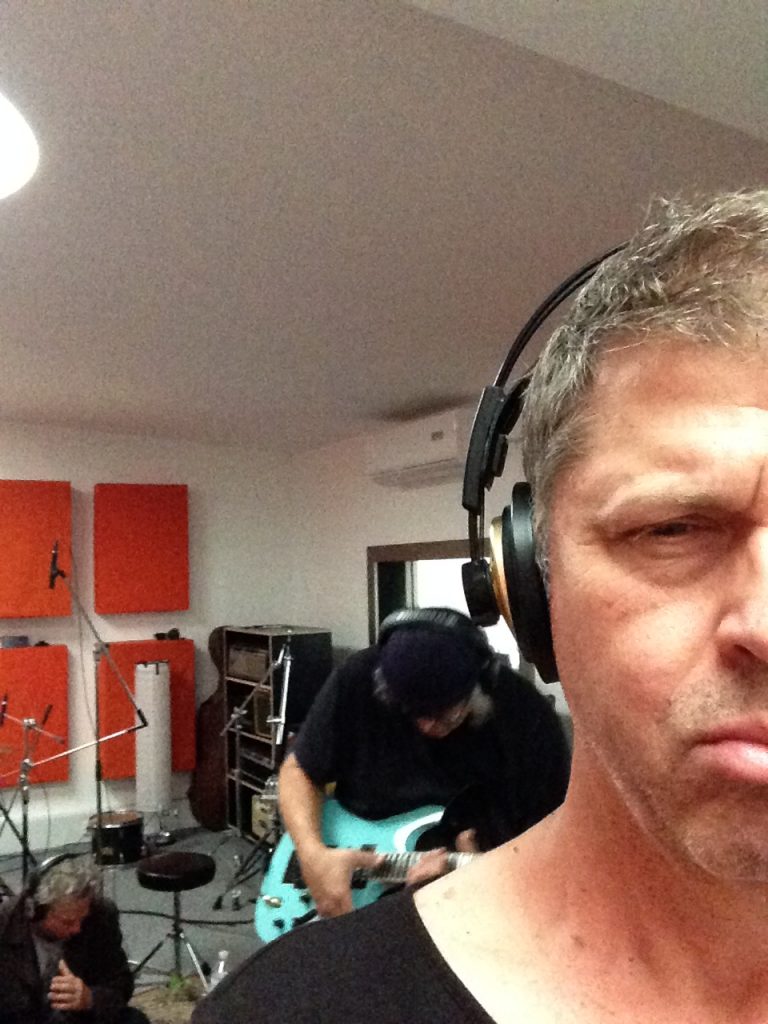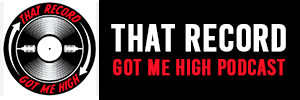
Pussy Galore photo by Phil Krieg LtoR: Tom Smith, John Hammill, Neil Hagerty, Julie Cafritz, Jon Spencer
When Tom Smith succumbed to cancer in January at age 65, he died peerless but left a world of family, friends and collaborators to mourn his passing. The loss reverberated every place this pioneering experimental noise musician operated, including South Florida, where Smith helped to build a thriving avant-garde scene on the fringes of a nightclubbing capital.
In the early ’90s in Miami, Smith and a creative accomplice, Frank “Rat Bastard” Falestra, formed To Live and Shave in L.A. (TLASILA), a fierce and prolific experimental band that used skill, guile, tape decks and guitars to make music out of accidents and chance. In the process they helped to galvanize a global movement.
“His death was a real shocker,” Falestra tells PureHoney. “It came out of nowhere.” It’s February, the 18th annual International Noise Conference at Churchill’s Pub has just quieted down, and Falestra has made his last airport run, shuttling performers back to their departing gates from the festival he created that put Miami on the experimental music map. A highlight of the five-day audio crawl was the “Shave Tribute,” with guitarists Falestra, Mark Morgan and Sonic Youth co-founder Thurston Moore raising a wall of looping, shuddering noise for their mate. A last blast for Tom Smith.
There is a lot of work to reckon with; the Bandcamp page for TLASILA boasts a staggering 80-plus releases. “We’re great, everybody else sucks,” is Falestra’s succinct mantra for TLASILA’s career arc, which attracted devotees-collaborators including Moore and Andrew W.K. “Tom respected some other artists: but not many,” says Falestra.
By the time he arrived in South Florida in 1991, Smith had already traveled a weird road of late 20th Century music. The Georgia native spent his teens in the small town of Adel; in hindsight one of the unlikelier ley lines of the US music underground. Two of his notable contemporaries and cohorts were fellow locals Don Fleming (Velvet Monkeys, Gumball) and Robert Lester Folsom (he of 1976’s folk-psych classic LP “Music and Dreams”). Smith was a fan of King Crimson and Sun Ra, a far-and-weird cry from the indoctrinated AOR rock of the day.
As a deejay at Valdosta State University’s WVVS-FM in the ’70s, he applied his nascent dub-inspired collage techniques on air to a possibly displeased audience. After a brief stint in New York City, Smith landed in another Georgia college town, Athens, where he formed the experimental band Boat Of, whose roster sometimes included future R.E.M. mumbler Michael Stipe.
Smith next moved to Washington, D.C., in the mid-’80s and found a roiling wave of activist, DIY-ready, straight-edge punk. But Peach of Immortality, the noise band led by Smith, weren’t particularly interested in clean living, let alone forming ad hoc committees to cure societal ills.
He found kindred spirits in Pussy Galore, leather-clad scowlers more in exaltation of ’72, “Exile on Main Street”-era Rolling Stones than breakneck hardcore. “Tom was like a used car salesman,” founding PG guitarist Julia Cafritz says with a laugh, recalling her first encounters with Smith in an interview. “He had this kind of sleazy, southern DJ voice. But you’d want to keep buying his cars! We were all 20 and he was maybe nine years older than us. But he might as well have been 1,000 years older.”
Smith eventually infiltrated PG, even signing on for a national tour with the band. “He immediately heard the transgressive thing that Pussy Galore were doing,” says Cafritz. “And Tom already seemed to know everything. He mentioned the band Whitehouse and I thought someone from the White House had started a noise band.”
Peach of Immortality featured Jared Louche on prepared guitar and cellist Rogelio Maxwell; Smith played tape decks, creating collage attacks in real time, onstage. Cafritz remembers Smith as a kind of antidote to the mandatory glumness of that scene. “Jared looked like the guy from [the “Saturday Night Live” skit] ‘Sprockets’ and kept a diary written in, like, his girlfriend’s menstrual blood,” says Cafritz. “When they’d play everyone was so somber and intense. And Tom is wearing a white muscle t-shirt with his big fuckin’ Cheshire Cat grin. He was hilarious.”
At first exposure, humor and horror seem like the Romulus and Remus of Tom Smith’s body of work. Prior to TLASILA (whose name was taken from a Ron Jeremy porn film), much of the noise/industrial/experimental scene was xeroxed seriousness. Smith had fun. He laughed onstage. Over the course of three decades, with TLASILA, as a solo artist, or collaborator, Smith issued a deluge of vinyl, cassette, CD, and digital download releases that cleverly exposed “The Emperor’s New Clothes” syndrome that can plague much “out” music. But there were subtleties that seemed to roar our of the grossness of Smith and TLASILA’s music.
“When I first heard “30-minuten männercreme,” I thought it was totally insane,” experimental musician and label owner Aaron Dilloway says of the 1994 TLASILA debut. “So, I bought it. I think Andrew W.K. bought it. I’ve never heard anything even close to that, you know? So, we just became obsessed.”
A founding of member of Michigan noise polymaths Wolf Eyes and owner of Hanson Records, Dilloway made the shift from fan to friend with Smith. Over the years, their collaborative paths often intertwined. “He was funny and he was a walking encyclopedia of avant-garde music and film,” says Dilloway. “When I first met him, he had like, white frosted tips in his hair! People didn’t know how to process Tom. He was a whirlwind. If he stayed at your house, he would just start ripping your CDs into his hard drive.”
Smith moved to Hannover, Germany in the early 2000s, where he lived with his partner, Claudia Franke. During annual trips to Europe, Dilloway and his family would stay with the couple. Smith continued to record and tour with TLASILA, with he and Falestra as the constants in a members, and while in Germany he created his ultimate imprint: Karl Schmidt Verlag. “His label has like over 500 releases up there,” laughs Dilloway. “Jesus, I’m a huge fan and I couldn’t keep up with all of it.”
Buried in the sidebar of the Verlag site is Smith’s terse credo: “Genre is obsolete!” A perusal through his body of the work bears that statement out.
On April 10, 2021, Smith’s friends held an online Zoom birthday party for him. Among the attendees were Fleming, Moore, Cafritz, Dilloway and Falestra. “I hung out on my porch, drinking gin and tonics for like, five and a half hours,” says Dilloway. “It was a highlight of the pandemic for me: just everybody telling ‘Tom stories’ and having a blast.”
“Tom was avant-garde but he was really too cool to be ‘just avant-garde,’ ” says Cafritz. “He was a fun guy and he somehow just knew how to pull people together. He definitely liked to put on a show and he was all about improvising. And I’m still amazed at how he inspired people like Dilloway and the next generation of noise musicians. But then again, I’m also not too surprised.”
Whether onstage, grinning in his signature muscle tee as he commandeered the tape decks, or in the studio as a hermetic creator of a vast body of unbending recorded works, Tom Smith was the ultimate mash-up of late 20th Century experimental music. Back in Miami, Falestra offers a kind of clue into Smith’s discipline and a secret to the onstage onslaught of their performances as TLASILA.
“Every band has a trick, right? Before we toured, Tom and I would run six miles on the beach, three times a week, so we would be in shape,” he says. “And we were scary onstage, man! We were brutal, just banging around into each other. I think that’s what made us stand out: our physical intensity and this wall of improvisation. When we performed, we went the full round.”
toliveandshaveinla.bandcamp.com ~ Daniel A. Brown












